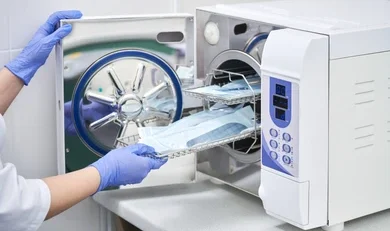
26 Dec Difference Between Sterile and Pyrogen-Free

Understanding Sterile:
Sterility in the context of pharmaceuticals refers to the absence of all viable microorganisms, including bacteria, viruses, and fungi. Achieving sterility is paramount to prevent contamination and ensure that medical products are free from any potentially harmful agents that could compromise patient safety.
Processes such as autoclaving, filtration, and aseptic techniques are commonly employed to achieve and maintain sterility in pharmaceutical manufacturing. The goal is to create an environment where no living microorganisms can survive, preserving the integrity and effectiveness of the products.
Unpacking Pyrogen-Free:
Pyrogens are substances that can induce fever when introduced into the body. In the pharmaceutical world, ensuring that products are pyrogen-free is crucial, especially for injectable medications and medical devices. Pyrogens can be bacterial endotoxins or other substances that trigger an immune response, potentially causing adverse reactions in patients.
To achieve pyrogen-free conditions, rigorous testing and quality control measures are implemented throughout the manufacturing process. This includes testing raw materials, monitoring production environments, and verifying the effectiveness of sterilization methods to eliminate pyrogenic substances.

The Impact on Pharmaceutical Effectiveness:
The distinction between sterile and pyrogen-free conditions is subtle but significant. Sterility ensures the absence of microorganisms that could lead to infections, while pyrogen-free status safeguards against substances that could induce fever or other immune responses in patients.
While these terms might seem interchangeable, they address different aspects of pharmaceutical safety. A product can be sterile but still contain pyrogens, and vice versa. Therefore, pharmaceutical manufacturers must prioritize both conditions to deliver products that meet the highest standards of safety and efficacy.
Conclusion:
In the intricate world of pharmaceuticals, the terms “sterile” and “pyrogen-free” play pivotal roles in ensuring the safety and effectiveness of medical products. Understanding the distinctions between these concepts is essential for both industry professionals and the general public. As consumers, being aware of the meticulous processes involved in achieving sterility and pyrogen-free conditions empowers us to make informed choices about the medications and treatments we receive. In the realm of pharmaceuticals, knowledge truly is health.


Sorry, the comment form is closed at this time.